|
Rohm and Haas Explorer Concept Cars
Concept cars are one-off vehicles made to showcase new styling and/or new technology. Most are made by automobile manufacturers and are often exhibited at auto shows to gauge customer reaction to new and radical designs which may or may not be mass-produced. The 1938 Buick Y-Job, commissioned by famed General Motors stylist Harley Earl, is generally considered to be the first concept car.
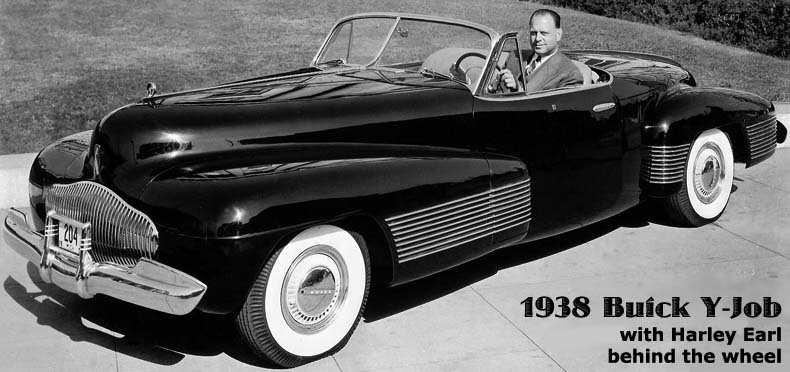
Other famous factory concept cars include the 1941 Chrysler Thunderbolt, 1951 GM Le Sabre, 1953 Cadillac Le Mans, 1955 Lincoln Futura, 1956 Packard Predictor and the 1958 GM Firebird III.
Designer Brooks Stevens designed the Scimitar line - a series of three concept cars he produced in 1959 for the Olin Mathieson Chemical Corporation, a mining and chemical company. Olin, had entered the aluminum business in a big way in 1956, and the Scimitar project was conceived as a marketing vehicle for the company's metal products. All three vehicles were built on 1959 Chrysler New Yorker chassis with 413 cubic-inch V8 engines and Torqueflite automatic transmissions, in three distinctive body styles: A two-door Hardtop Convertible, a Town Car Phaeton, and a sliding-roof station wagon called the All-Purpose Sedan.
Industrial suppliers of materials and components used by the auto industry often developed concept cars to showcase their offerings. In 1965, the Copper Development Association commissioned Virgil Exner to design the Mercer Cobra as a one-off concept vehicle to demonstrate the benefits of copper for automotive applications.
Gene Bordinat, Chief Designer at Ford designed a concept car in Royalex - a foam-core, thermoformable ABS plastic composite sheet produced by Uniroyal - in 1965. It was called the 'Ford XP Bordinat Cobra'.
More recently, Yanfeng, a maker of auto interiors, has offered three concept vehicles with futuristic interiors.
 In the 1960s, Rohm and Haas Co., a Philadelphia-based chemical and plastics firm, best known for its acrylic thermoplastic, Plexiglas, developed a series of five Explorer concept cars to showcase the use of Plexiglas as well as other Rohm and Haas products in automobiles. In the 1960s, Rohm and Haas Co., a Philadelphia-based chemical and plastics firm, best known for its acrylic thermoplastic, Plexiglas, developed a series of five Explorer concept cars to showcase the use of Plexiglas as well as other Rohm and Haas products in automobiles.
The Plastics Department was a frequent advertiser in various automotive trade publications, promoting the use of Plexiglas in various applications. This one from the November 1964 issue of Automotive Industries is typical:
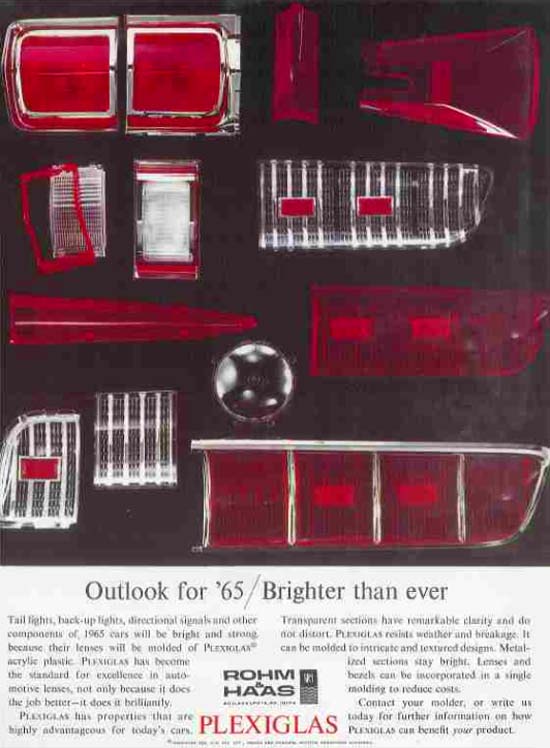
It proclaims: "Outlook for '65/Brighter than ever: Tail lights, back-up lights, directional signals and other components of 1965 cars will be bright and strong because their lenses will be molded of Plexiglas acrylic plastic."
Most Explorer cars had four things in common:
1. Unusual and generally larger parking lights, turn signals and taillights, in order to encourage increased use of injection-molded acrylic for automotive lighting applications.
2. 'Explorer' escutcheons made of Plexiglas, second-surface decorated and/or backlit, replacing stock logos, emblems and nameplates on the vehicle. The logo was two stylized E's facing one another to form a diamond shape"
3. Large elaborate Plexiglas instrument panels, demonstrating unique methods of edge-lighting or other illumination techniques.
4. Wheelcovers made partly or mostly out of Plexiglas, second-surface decorated and vacuum-metalized to give a 'chrome encased in glass' appearance. Typical production cars used chrome or stainless steel stamped wheel covers, sometimes with injection-molded and second-surface decorated acrylic center inserts, such as the ones on the 1955-56 Fords and Thunderbirds, as well as many other cars made from the 1950s through the 1980s:
The Rohm and Haas concept cars were as follows:
• Explorer I was a slightly-modified Corvair Monza coupe. Black in color, it featured Plexiglas headlight covers, larger acrylic taillights, special molded wheelcovers and an expansive acrylic-faced instrument panel. The car was introduced in 1962.
Its whereabouts are unknown. (Thanks to Glenn Brummer who supplied an image of it displayed at an R&H trade show booth as well as some of the other images on this page.)
• Explorer II was based on a 1963 Corvette Sting Ray roadster.
Renderings and photos clearly show the faux-air intakes on the hood - a feature seen only on the 1963 models. Explorer II debuted in late 1963 or early 1964. The most striking feature of the car was the removable fiberglass hardtop which had a one-piece formed Plexiglas insert which served as rear window and clear roof panel. (It should be noted that the stock Corvette Sting Ray hardtop's rear window was formed from acrylic sheet.)
Explorer II also featured wraparound taillights, replacing the four stock round taillights. (1963-67 Sting Rays used round, bullet-shaped 1958 Chevrolet taillights.)
The vehicle also had clear acrylic headlight covers over fixed sealed beam headlights, replacing the stock rotating/retractable lamp assemblies. Inside, the car had a custom dashboard which featured a revised instrument panel. Explorer II was eventually sold to R&H's Detroit District Sales Manager, who shipped the car to his vacation home in Florida.
• Explorer III was based on a 1965 Ford Mustang Fastback coupe. It debuted in January 1965.
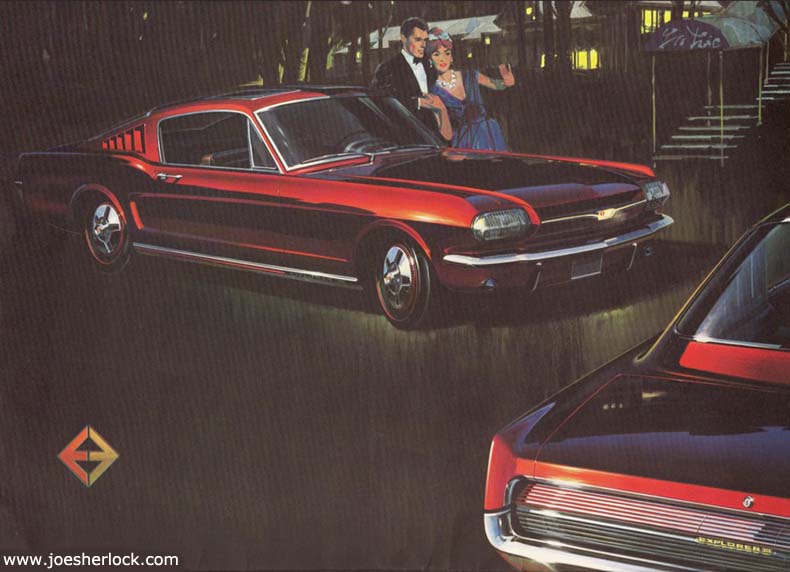
The modified Mustang featured molded headlight covers with built-in lens pattern, a Plexiglas grille bar which contained an illumined center emblem and sequential turn signals, decorated acrylic wheel discs, illuminated acrylic rocker panels with built-in courtesy lights, a bubble Plexiglas instrument cluster (inspired by the ones of 1953-’55 Fords), center steering wheel medallion, twin roof panels with rotatable polarizing acrylic inserts control overhead panel transparency molded and second-surface decorated glove box door, wall-to-wall taillights and other features.
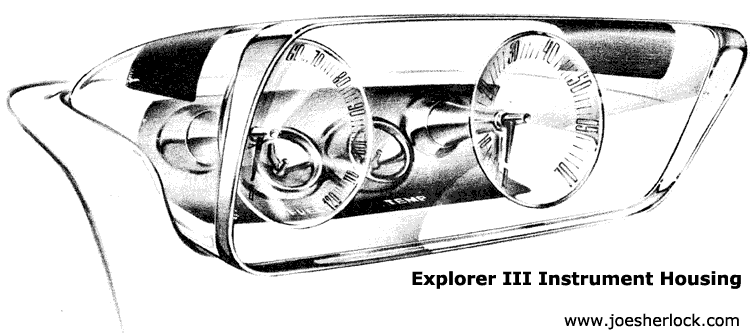
William M. Schmidt Associates designed and developed this one-off concept. Bill Schmidt was a well-known and respected auto designer. As chief stylist at Lincoln-Mercury from 1949-’56, he was responsible for all design, including the 1953 XL-500 Plexiglas-roofed show car and the twin-bubble Plexi topped 1955 Lincoln Futura show car. Later, as vice president and director of styling at Studebaker-Packard, his team created the 1956 Packard Predictor. Schmidt then moved on to Chrysler. He subsequently formed William M. Schmidt Associates in 1959, a vehicle and industrial design firm.
• Explorer IV was a custom-bodied coupe built on a Buick Riviera chassis with a uniquely-styled fiberglass body finished in a metallic gold color.
Early drawings of the car show Plexiglas headlight covers and a large clear taillight, with clear lenses over red bulbs. The headlight design was quickly revised once it became clear that new federal laws prohibited covered headlamps.
(Volkswagen got rid of its glass-covered headlamps for the 1967 model year; E-Type Jaguars lost their glass headlamp covers beginning with the 1968 model year.)
Explorer IV debuted in late 1966 with hidden headlights - retractable ones that dropped down below the bumper - and red Plexiglas taillights that wrapped over the top of the car, forming a U-shape.
|
|
The author behind the wheel of Explorer IV in March, 1967. The car had just come off the show circuit and minor cosmetic repairs were being made at the Plastics Engineering Laboratory prior to its exhibition at the annual Rohm and Haas stockholders meeting. Note the amber wraparound parking lights and reflector at the front of the car - a feature not shown in the revised illustration.
|
While not shown in the rendering, the actual car had wraparound amber acrylic front parking lights to comply with the 1968 federal regulations requiring side marker lights.
• Explorer V was also a custom-bodied coupe, designed by Sundberg-Ferar, an industrial design firm located in Southfield, Michigan. (Sundberg-Ferar also styled the postwar Crosley small car.) Explorer V debuted in June 1968. (The car's first wide-scale public exhibition was at the National Plastics Exposition in the International Amphitheatre in Chicago in November, 1968.)
|
|
| Explorer V in front of Rohm & Haas corporate headquarters at Independence Mall West in Philadelphia |
This R&H concept car featured a body made from fiberglass reinforced plastic, using R&H's Paraplex P-19 acrylic/polyester resin. Paraplex P-19 acrylic-modified polyester resin is used in Sheet Molding Compound (SMC) - a ready-to-mold glass-fiber reinforced polyester material primarily used in compression molding. SMC is typically a mixture of polymer resin, inert fillers, fiber reinforcement, catalysts, pigments and stabilizers, release agents, and thickeners. Paraplex P-19 was offered low shrinkage which resulted in very smooth surfaces on finished compression-molded parts. (Regular polyester resin SMCs emerge from the mold with uneven surfaces which require sanding and finishing.) Once painted, parts utilizing P-19 offer Class A surface finish equal in surface smoothness to stamped steel. In the early 1970s, Oldsmobile used P-19-containing SMC to produce exterior body components including front fascia and hoods.
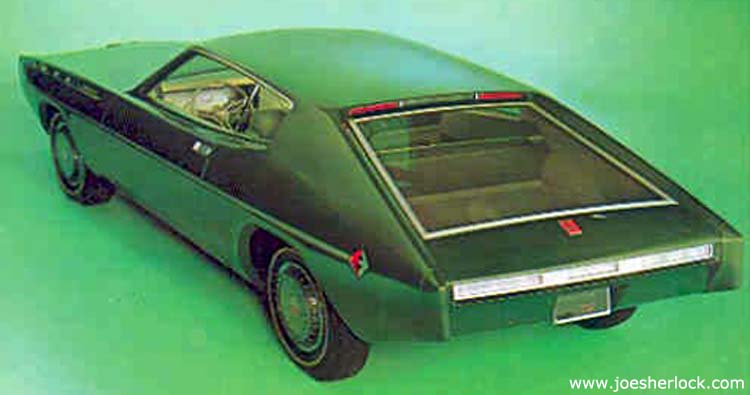
Explorer V contained several other products from R&H's portfolio, including side-striping made from Tuffak acrylic film, interior faux wood trim made using Korad C acrylic film, vinyl components which contained R&H's acrylic plasticizers. Explorer V's front end featured large Plexiglas fluorescent light panels and retractable amber fog light lenses to cover sealed-beam headlamps. The rear of the vehicle featured multiple Plexiglas tail lamps including ones in the roof.
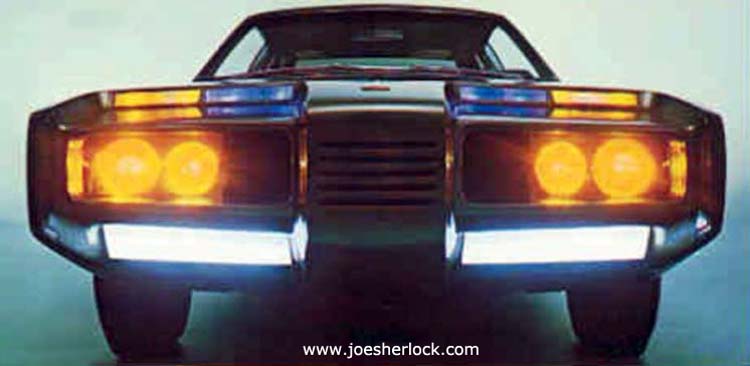
In lieu of a conventional trunk was a roll-out cargo bin thermoformed from Kydex, an acrylic-PVC alloy sheet. The car's interior console had a dark gray Plexiglas riding cover, acting as a blackout panel. Wheelcovers were injection-molded Plexiglas, decorated and selectively chrome-plated around the edges. (Selective chrome-plating was a new process, developed at R&H's Plastics Engineering Lab.)
I had heard that Explorer IV was scrapped and its Buick Riviera chassis as well as some of the interior pieces were used to construct Explorer V. The V was the last of the Explorer series and was destroyed in a Detroit-area warehouse fire in 1970 or so.
The Explorer program ended due to a combination of factors:
1. The recession of the early 1970s reduced available funding for this fairly-costly project. With new management at the helm and, in the face of falling profits, the focus was on return-on-investment for all projects within Rohm & Haas.
2. It was felt that the program had run its course and the benefits of yet another Plexiglas-loaded concept auto were, at best minimal. The government requirement for reflective front and rear side marker lights on cars made in 1968 and later was a big help to acrylic manufacturers because it forced the use of more acrylic in each vehicle. Some felt that the Explorer cars - all of which had side safety lights of one kind or another - may have inspired such requirements.
3. Many of the ideas presented in the Explorer cars resonated with style-crazy car designers of the 1950s and ‘60s. By 1970, automobile companies were focusing their body design energies on upcoming federal mandates, such as five-mph bumpers, and were, therefore, less interested in glitzy new style features. (When I think of 1970s cars - I recall only three unique features of the era - big ugly bumpers, opera windows and padded vinyl roofs.)
4. Rohm & Haas was spending more promotional dollars on non-automotive markets with growth potential: bullet-resistant Plexiglas for security applications, internally illuminated signs, transparent store fixtures and displays and acrylic-faced, fiberglass-reinforced spas, bathtubs and tub/shower surrounds.
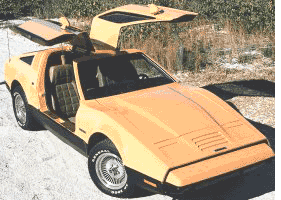 Ironically, the body of the gull-winged 1974-75 Bricklin SV-1 was made from acrylic-faced, fiberglass-reinforced panels similar to the aforementioned bathtubs. Early Bricklin examples used continuous-cast acrylic sheet made by Swedlow Industries but the cast sheet was brittle and often cracked at edges. Ironically, the body of the gull-winged 1974-75 Bricklin SV-1 was made from acrylic-faced, fiberglass-reinforced panels similar to the aforementioned bathtubs. Early Bricklin examples used continuous-cast acrylic sheet made by Swedlow Industries but the cast sheet was brittle and often cracked at edges.
Bricklin then switched to sheets made from Plexiglas DR, a high-impact acrylic material which offered far superior impact and crack resistance. DR also formed a stronger bond to the polyester fiberglass backing, solving delimitation problems encountered with the Swedlow sheet. (Rohm and Haas supplied Plexiglas DR resin pellets; Atlas Plastics of Cape Girardeau, MO and Pawnee Plastics of Wichita, Kansas extruded the raw material into flat sheets which were later formed into panels by Bricklin at its Minto, New Brunswick facility.)
Why didn't any of the Explorer cars have a Plexiglas DR-faced, fiberglass composite body? Plexiglas DR wasn't commercially available until early 1974, long after the Explorer program had been abandoned. Ecoplex - a process combining vacuum-forming of Plexiglas DR extruded sheet with vacuum bag molding of glass-reinforced polyester resin that produced strong adhesion and smooth surfaces on both sides of the resultant composite - wasn't fully developed until 1977. (posted 4/22/19)
Other Pages Of Interest
| blog: 'The View Through The Windshield' |
| greatest hits: index of essays & articles | blog archives | '39 Plymouth |
| model train layout | about me | about the blog | e-mail |
copyright 2019-20 - Joseph M. Sherlock - All applicable rights reserved
Disclaimer
The facts presented on this website are based on my best guesses and my substantially faulty geezer memory. The opinions expressed herein are strictly those of the author and are protected by the U.S. Constitution. Probably.
If I have slandered any brands of automobiles, either expressly or inadvertently, they're most likely crap cars and deserve it. Automobile manufacturers should be aware that they always have the option of trying to change my mind by providing me with vehicles to test drive. I'll dutifully report my road test impressions on this car blog.
If I have slandered any people or corporations, either expressly or inadvertently, they should buy me strong drinks (and an expensive meal) and try to prove to me that they're not the jerks I've portrayed them to be. If you're buying, I'm willing to listen.
|